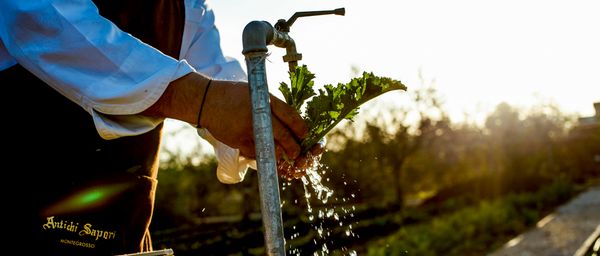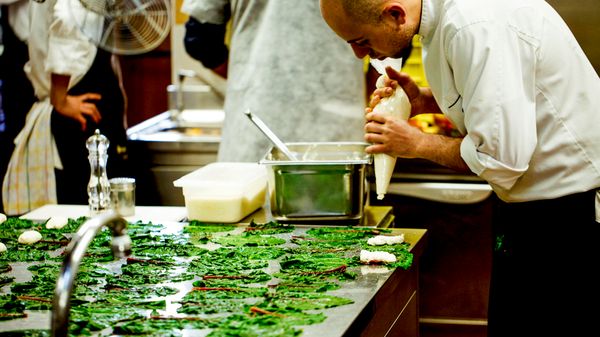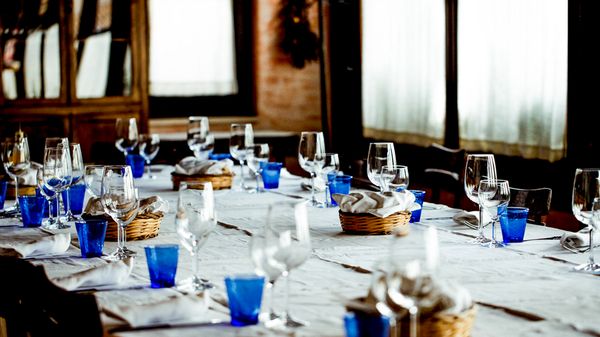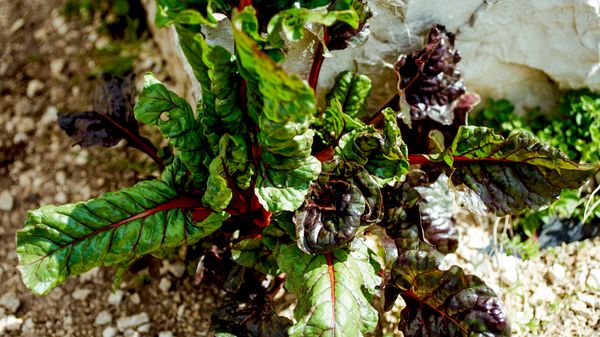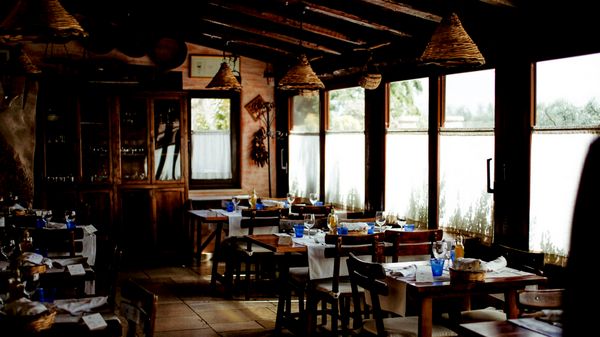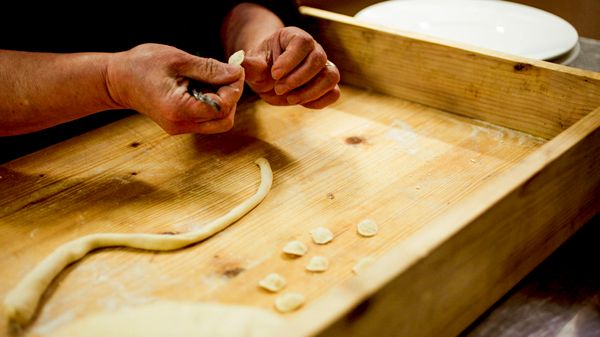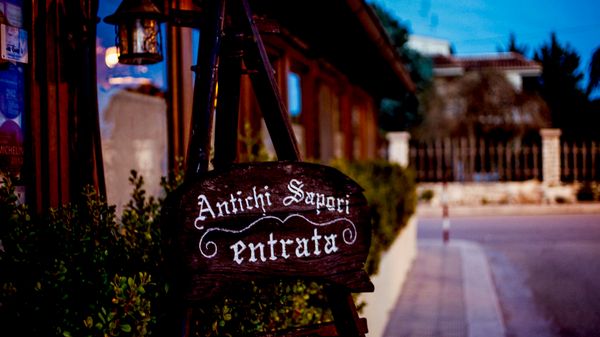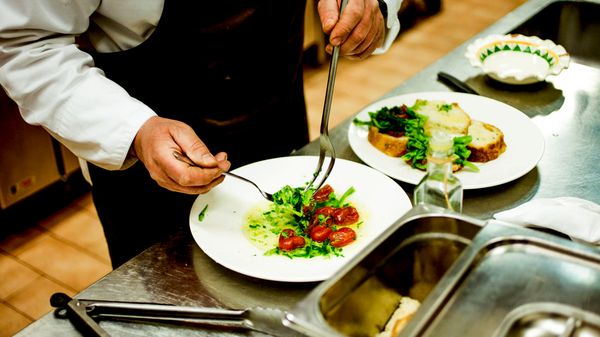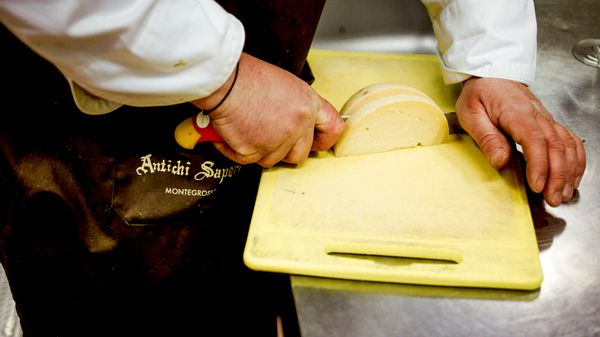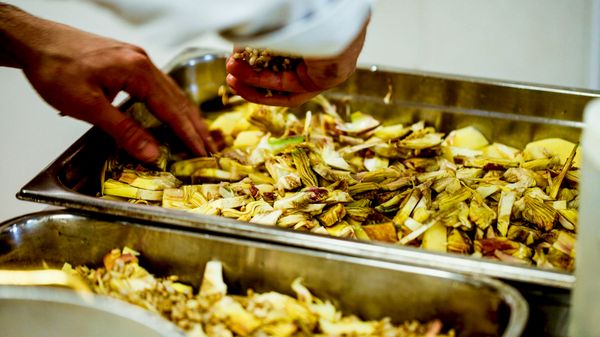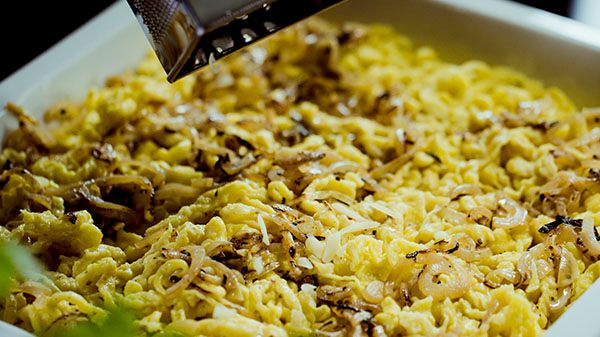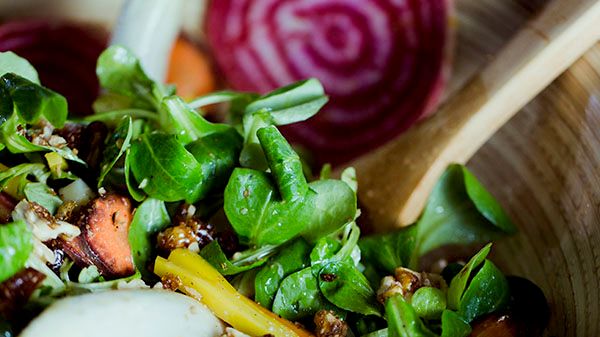I showed this book to a number of fruit and vegetable sellers in our region. Many of them are now once again selling old vegetable varieties and wild salad greens. So, for me, respect means knowing and understanding what nature has to offer in each season and how to prepare those foods. Anyone who orders a salad in our restaurant not only gets a dish rich in vitamins, but also a little bit of the natural history of our land. Food products are not consumer goods; they are the most intimate thing that we consume as human beings, because we ingest them via our mouths. We should all be aware of that.
From the garden to the plate
His style of cooking has little to do with classic award-winning cuisine. Instead of taking a gastronomical arms race approach, he believes in simplicity. Pietro Zito makes delicious dishes using very little, and his small restaurant has become a mecca of the Italian Slow Food movement. A visit to the master of spectacular simplicity.
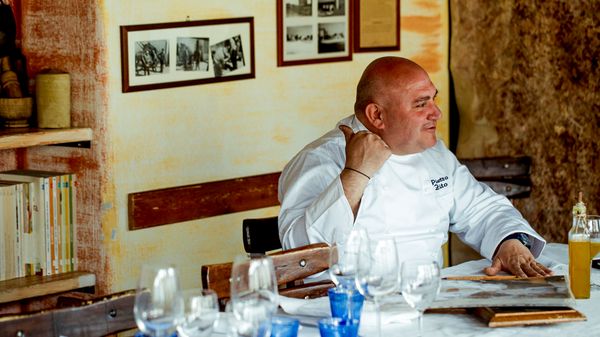
In the heart of Apulia
Just ten kilometres from the Adriatic coast, the farming village of Montegrosso lies in the middle of nowhere. This region is not famous for anything in particular, perhaps only for the Castel del Monte, the old hunting lodge of Frederick II. Montegrosso belongs to the administrative district of Andria, the closest larger city. To some extent the entire area surrounding Andria is made up of nothing but olive groves. When you drive into the city, you are welcomed by a sign proclaiming it as “The City of Oil.”

The Stadium of Olives
Even the name of Andria’s 12,000-seat stadium pays homage to the surrounding region: It is named “Stadio dell’Ulivo” (stadium of olives). On hot summer days, the temperature can soar to over 40°C in Apulia – and if you decide to climb aboard your Vespa scooter to drive the 18 kilometres from Andria to Montegrosso on the old highway that threads its way through the olive groves, the hot wind will immediately dry out your eyes. For decades Montegrosso was just a farming village whose residents primarily made their living from growing olives. Visitors from Andria or other cities in Apulia such as Bari never found their way here – until Chef Pietro Zito put Montegrosso on Italy’s culinary map when he founded his restaurant Antichi Sapori (ancient cuisine) here in 1992.
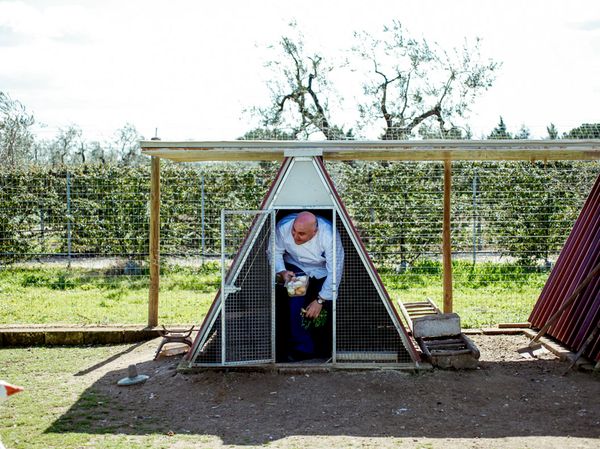
"Many people thought I was crazy"
My family comes from Montegrosso. My father, Francesco, was a farmer, my mother, Concetta, a housewife. At home we ate orecchiette with rapini, but there was also chickpea stew, pane cotto, bruschetta with tomatoes, wild vegetable salads, good olive oil, good bread – those are the dishes that I grew up with and for which the area around Andria and Montegrosso is known. When I first opened the osteria and served precisely these old dishes, many people thought I was crazy. Only farmers lived in this deserted part of the world and at home they ate the very food that I was serving in the restaurant. I may as well have tried selling ice cubes in Greenland. These days we are booked up three months in advance. Our guests travel from all over Apulia to sample our “poor” cuisine.

About Slow Food
Our restaurant is part of the Slow Food network. The Slow Food movement is committed to preserving regional culinary traditions with native vegetable and animal products. This means that in our kitchen we use only food that grows or is produced within a distance of 20 kilometres of the restaurant. This also eliminates long transport routes which cause environmental pollution. We are supplied by local dairies, butchers, oil producers, and wine cellars. A total of 20 local family-run businesses work for us: housewives supply us with handmade orecchiette; farmers produce fresh goat’s cheese; oil farmers make our olive oil. All our vegetables, salad, fruit, and eggs come from our own garden.
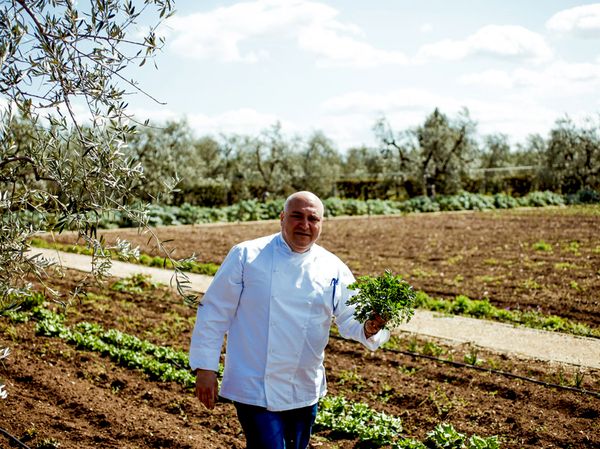
"I have an intimate relationship with our landscape"
I was born in Montegrosso and I live here with my wife and six-year-old daughter. I have an intimate relationship with our landscape and with the traditions of the farmers. When I go for a walk in the Murgia, the nature park nearby, I see not only green pastures the way perhaps non-locals do, I also see that this landscape produces wild-growing dandelions, red poppies, and dill. Artichokes, arugula, and various types of mint also grow here. We call these wild plants ‘Erbe spontanee.’ Many of these varieties were hard to find at local markets in the 1990s and early 2000s. Back then, Italian fruit and vegetable sellers were selling iceberg lettuce from Holland, tomatoes from Spain and radicchio from Bergamo. One day, I asked myself: what connection do I actually have to these products?
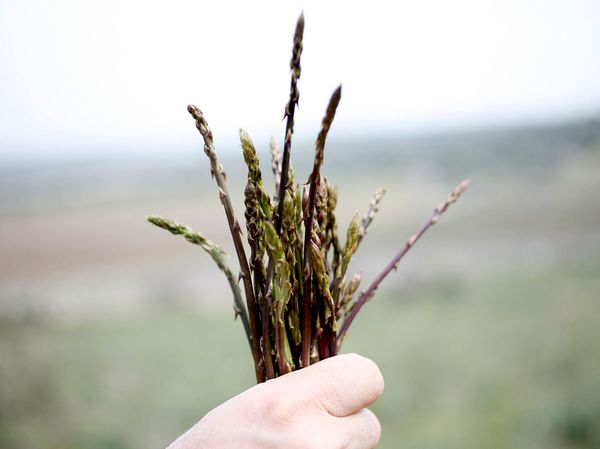
"Respect means understanding what nature provides"
This food comes from regions that I don’t really know and from greenhouses, which I don’t like. Transporting this food also involves costs and it pollutes the environment. So back then I made the effort to explore the Murgia with older people from the village, looking for edible wild plants, photographing them, classifying them, and I produced a handbook.
No seafood on the menu
A few months ago, a good friend tried to open a fish restaurant in Montegrosso. I told him: “Your plans don’t make any sense to me. Guests who want to eat fish will get fresher products if they drive to Trani or Bisceglie 20 kilometres away. Here in Montegrosso, they should be eating fresh rapini, wild artichokes, tasty focaccia, and bruschetta with healthy olive oil from our region. Fish don’t grow on trees here, so what’s the point of serving fish in Montegrosso?”He thought about it for a little while and then he redesigned his menu. Another eight osterias have now opened in the area around Montegrosso. They follow a similar approach to us and therefore also drive the local economy. I only source wine from Apulia and the Basilicata region to ensure that the local winegrowers get the recognition they deserve. New dairies, organic farms, and artisanal business have emerged and even shepherds have returned to the area with their livestock. Furthermore, in our dishes, I only use olive oil that comes from Andria and Montegrosso. And what do you do when you are invited to conferences and trade fairs abroad? I always have two or three bottles of olive oil from Montegrosso with me in my luggage.

Who is Zito?
He may not have any stars, but his approach is clear: almost everything that goes into his pot comes out of his own garden. Pietro Zito is 47 years old and one of Apulia’s most famous chefs. On their tour through the culinary traditions of Europe, food critics from The Guardian, a British magazine, selected Pietro Zito’s creations as one of the ten most memorable menus. In addition to his activities as chef, Zito is committed to Africa: His aid project “Chefs sans Frontières” (chefs without borders) promotes the establishment of cooking schools in Ethiopia and Senegal. Unemployed youths are given culinary training and are encouraged to use and promote local structures.
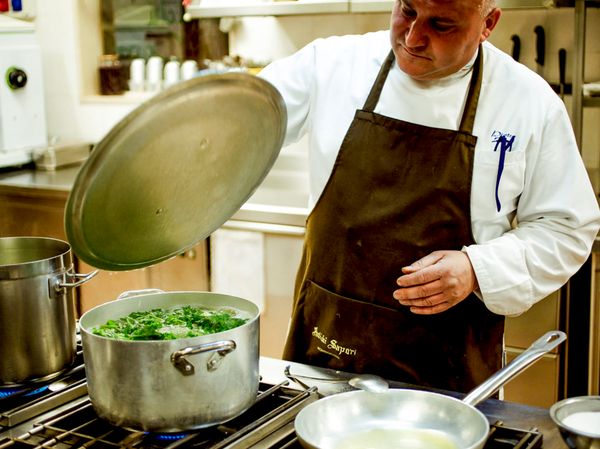
Zero-kilometre cuisine
We are used to being able to eat anything during any season. While that may be good for us, it is bad for the climate and for quality. Slow Food once again makes eating both regional and seasonal.
Slow Food was established in Italy in 1989.
The movement is committed to preserving regional cuisine with native vegetable and animal products as well as their local production. Gastronomy in line with Slow Food criteria has to be good, clean, and fair, and food production has to boost the regional economy. Slow Food now exists in more than 100 countries and the movement has more than 82,000 members.
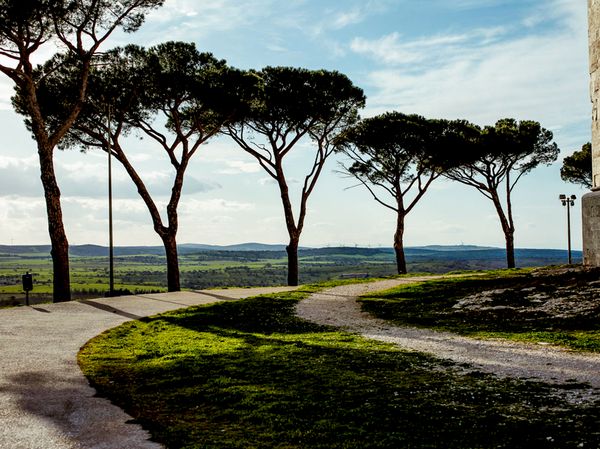
Where is Montegrosso?
Montegrosso is a farming village located about 18 kilometres from Andria, an Apulian city with a population of 100,000. Montegrosso is in the Murgia region nestled in a landscape of rolling hills covered in part by oak forests while other parts are treeless and bare. In the springtime, the hillsides provide lush pastures with a rich variety of wild greens and vegetables.
Shepherds and hunters
Shepherds and hunters have roamed this area since ancient times. This natural landscape is also home to wolves and wild boar. Just a few miles away, the Murgia ridge runs south-eastward, parallel to the Adriatic Sea. The highest hills are the Torre Disperata (686 m), the Monte Caccia (682 m), the Murgia Serraficaia (673 m), and Monte Scorzone (668 m).
